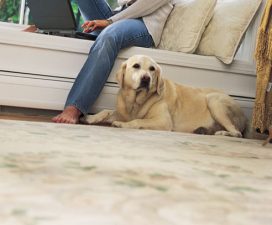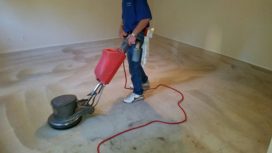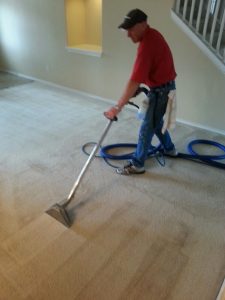Potty training takes time and proper instruction, and when you think your pet is finally house-trained, you step in a puddle. Please tell me that’s water…It’s probably not. So why did your “house-trained” dog find its way into your bedroom to relieve themselves? And how do you keep them from continuing this habit—you want to help your pet, as well as keep your carpets stain- and odor-free. Well, let’s take a look.

1. Why Do House-trained Pets Still Pee in the House?
Anxiety – when a dog feels distressed, bad indoor behaviors may arise, such as urination, chewing, barking, and digging. This can stem from separate anxiety, and without more attention, this can weigh heavy on your dog’s health and your wallet (if you have to continuously repair indoor furniture, flooring, doors, etc.)
Infrequent bathroom breaks – by barking or scratching the door, pets can notify their owners when they need to go outside. But if you are frequently away from home for hours at a time, this gives your pet infrequent bathroom breaks; thus, they aren’t as consistent with their house-training.

Medical issues – whether it’s from medication or a medical issue, some pets are unable to hold their bladder or bowels. Many of the diseases/disorders that affect a pet’s urinary system (such as prostate disease, cancer, bladder infections, etc.) can’t be completely controlled. So it’s important to be patient and comforting when your pet has an accident.
Inconsistent potty training – you can’t expect your dog or cat to be house-trained in a week. Consistent training will reduce the chance of indoor bathroom incidents. If you don’t have the time or knowledge to train your pet, find a dog training center—it may be your best bet.

Familiar pet odor – if you have caught your pet peeing in the same spot again and again, it may be because you haven’t been able to remove old pet odors.
6. Old age – weak bladder muscles make it difficult for pets to control when they urinate.
Once you identify the issue, it will be much easier to control your pet’s bathroom behaviors. Ignoring it, won’t help your pet, and you will notice other side-effects of a pet’s house soiling—that is pet odor and damaged carpets.
2. What Does Pet’s House Soiling do to Carpet Over Time?
Pet Odor – pets can have accidents, but when it occurs more often than not, an odor may start to develop. When pet odor is present, pets are attracted to that spot and may continue to urinate there. This can result in carpet stains.
Carpet Stains – urine can affect the dyes in carpet. And constant urination can create carpet stains, which are difficult to get rid of.
Damaged Carpet & Upholstery – left unattended, urine can seep in between the fabric’s layers. This can also loosen the floor attachment. And the extent of damage to carpet or upholstery is dependent on the fabric’s dye, type of manufacture, and whether carpet or upholstery protection has been applied.

3. How to Prevent Pet Potty in the Home
If you have stubborn pet odor or stains, Best Carpet Cleaning Experts has the experience and knowledge to remove even the most stubborn pet odors and pet stains. Your profession pet carpet cleaning company in San Antonio TX. Our free carpet cleaning review and inspection will show you how we can remove your pet odors and stains. We can also advise you on how to keep your carpets well-maintained in the future. Do you have pet odors and pet stains in your carpets? Give us a call today. For the best pet odor removal in San Antonio, call us at 210-857-0682.

